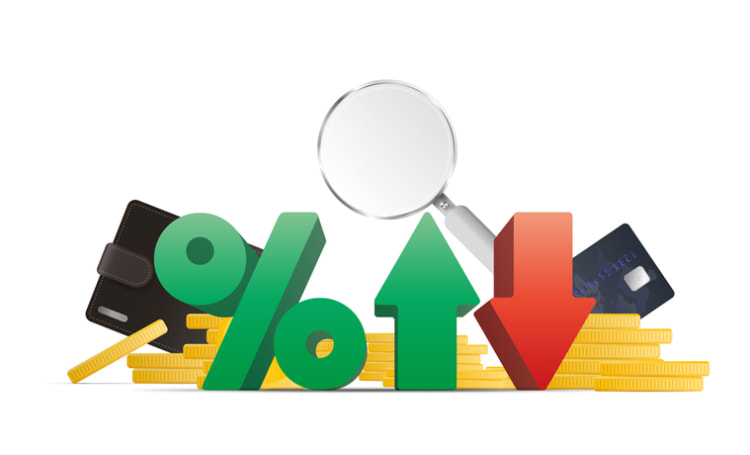The world of sales is constantly evolving, and with it, the strategies and tools that sales teams use to succeed. Enter “what is sales enablement”, a relatively new concept that has taken the sales world by storm, transforming the way sales and marketing teams collaborate, and ultimately driving better results for organizations. But what exactly is sales enablement, and why is it important in 2024?
Dive into this definitive guide on “what is sales enablement”, where we’ll explore its evolution, its relationship with sales operations, the key components of a successful sales enablement strategy, and the benefits of implementing this powerful approach. We’ll also discuss how to build a sales enablement team, measure success, and choose the right tools and technology to support your sales enablement initiatives.
Key takeaways
- Sales enablement is a strategic approach that equips sales teams with the right resources and tools to improve customer experiences, revenue growth, and collaboration between sales and marketing teams.
- The successful implementation of sales enablement requires four key components - Content, Technology, Processes & People, as well as dedicated training initiatives for employees.
- Sales enablement can lead to improved productivity & customer experience while increasing revenue growth through optimizing strategies & KPIs.
Understanding sales enablement

Sales enablement is a strategic approach that empowers sales teams with the right resources, processes, and technology to drive revenue growth and improve customer experiences. As the sales landscape becomes increasingly competitive, organizations recognize the importance of the sales enablement process in arming their sales force with the necessary skills, knowledge, and tools to succeed. So, who owns sales enablement within an organization? The answer is simple: sales enablement leaders collaborate closely with sales and marketing teams, ensuring that both are aligned and working towards the same goals.
A deeper understanding of the evolution of sales enablement and its distinction from sales operations is crucial for appreciating its significance in 2024.
The evolution of sales enablement
In recent years, sales enablement has emerged as a crucial aspect of modern sales organizations. Research from CSO Insights reveals that nearly two-thirds of sales organizations now have a dedicated person, program, or function for sales enablement, indicating a growing focus on empowering sales teams with the right resources, tools, and best practices. This shift is further evidenced by the more than 279,000 sales enablement specialists listed on LinkedIn, showcasing the increasing importance of this role in today’s business landscape.
The rise of sales enablement has brought about a multitude of benefits, such as enhanced sales productivity, improved customer experience, and increased revenue growth. As the prominence of sales enablement grows, organizations should identify the stakeholders and adopt effective practices to unlock sales success.
Sales enablement vs. sales operations
While both sales enablement and sales operations contribute to the overall success of a sales organization, they have distinct areas of focus and functions. Sales operations, for instance, is centered around sales, handling tasks like sales territory optimization, sales compensation, analytics, and sales technology. Meanwhile, sales enablement focuses on the sales personnel, encompassing onboarding, training, certification, coaching, sales communication, sales material assets, and the measurement and optimization of sales performance results.
Recognizing the distinction between sales enablement and sales operations is key to enhancing your organization’s sales effectiveness. By ensuring that each department fulfills its unique responsibilities, organizations can optimize their sales processes, better support their sales teams, and ultimately achieve greater sales success.
Key components of a successful sales enablement strategy

A successful sales enablement strategy is built upon four key elements:
- Content
- Technology
- Process
- People
By focusing on these essential components, organizations can create a comprehensive sales enablement program that drives better results and enables their sales teams to thrive.
For a robust sales enablement strategy, you need to delve into these components and comprehend their contributions. Let’s explore the significance of aligning sales and marketing teams, the role of sales training and coaching, and the importance of utilizing the right sales enablement tools and technology.
Aligning sales and marketing teams
One of the critical aspects of sales enablement is fostering collaboration between sales and marketing teams. The alignment of these departments ensures that both teams are working together to achieve the same objectives and optimize sales performance. Research shows that when sales enablement is prioritized across the company, it can lead to enhanced sales and marketing alignment, improved sales communications, and augmented sales productivity.
A harmonized sales and marketing approach facilitates the buyer’s journey and bolsters successful branding. By aligning these teams, organizations can streamline their strategies and ensure that their sales and marketing efforts are in sync, ultimately driving better results and boosting sales success.
Sales training and coaching
Training and coaching are instrumental in providing sales teams with the skills and knowledge they need to succeed. Effective sales training involves imparting the right skills, knowledge, and tactics that support sellers in closing deals, while sales coaching focuses on providing personalized guidance and feedback to help sales reps continuously improve their performance.
Training opportunities come in many shapes and sizes. Examples include sales boot camps, webinars, e-learning modules, certification programs, and more informal methods such as lunch and learns, sales competitions, and mentorship programs. Sales coaching tools like role-playing scenarios, training videos, or call and email scripts can help sales reps refine their skills and increase their effectiveness. In fact, research has shown that up to 65% of employees perceive quality training as a means to remain engaged, highlighting the need for ongoing education and coaching within sales organizations.
Investing in sales training and coaching empowers sales teams to excel, leading to improved productivity, superior customer experiences, and increased revenue growth.
Utilizing sales enablement tools and technology
Leveraging the right tools and technology, such as sales enablement software, is a crucial aspect of sales enablement, as it enables sales teams to access the information and resources they need to close deals efficiently. Sales enablement platforms are tools or systems that facilitate the visibility of sales content, training, and coaching processes. They also provide sales reps with valuable insights into customer journeys and help streamline the sales process. By utilizing sales enablement technology, companies can further enhance their sales strategies and drive success.
Choosing appropriate sales enablement tools and technology is critical to propel your sales organization’s success. By incorporating CRM (customer relationship management) software, email automation tools, and data and analytics software, sales teams can gain a better understanding of their customers, optimize their outreach efforts, and ultimately improve their overall sales effectiveness.
Benefits of implementing sales enablement

Implementing a sales enablement strategy can bring a multitude of benefits to your sales organization. Some of the key advantages include improved sales productivity, enhanced customer experience, and increased revenue growth. By empowering sales teams with the right resources and support, organizations can unlock their full potential and drive better results.
To appreciate the value of sales enablement fully, we will examine these benefits and their contribution to the overall success of your sales organization.
Improved sales productivity
Sales enablement can have a significant impact on sales productivity, enabling sales teams to work more efficiently and effectively. By providing timely access to relevant information and resources, sales enablement helps sales reps optimize the buyer’s journey, thereby expediting the buying process and increasing win rates.
Additionally, sales enablement can assist sales teams in optimizing their processes and automating tasks, allowing them to dedicate more time to activities that involve direct customer interaction. This not only leads to increased efficiency but also contributes to better customer retention and increased customer loyalty.
Enhanced customer experience
The implementation of sales enablement can also play a crucial role in improving customer experience. By empowering sales teams with the right tools, resources, and training, sales enablement helps sales reps better understand their customers’ needs and tailor their approach accordingly. This results in an enhanced customer experience, as sales reps are better equipped to address customer concerns and provide relevant solutions.
One way to measure the impact of sales enablement on customer experience is by tracking the Net Promoter Score (NPS), a metric used to assess customer satisfaction and loyalty. A high NPS indicates that customers are more likely to recommend your products or services, reflecting the effectiveness of your sales enablement efforts.
Increased revenue growth
Lastly, implementing sales enablement can lead to increased revenue growth for businesses. By optimizing sales productivity, enhancing customer experience, and fostering alignment between sales and marketing teams, sales enablement can have a direct impact on revenue generation.
As organizations continue to invest in sales enablement strategies, it’s crucial to track and measure the success of these efforts in driving revenue growth. By closely monitoring key performance indicators (KPIs) and continuously refining sales enablement initiatives, businesses can unlock the full potential of their sales teams and achieve greater success in the long run.
Building a sales enablement team

Creating a dedicated sales enablement team is a crucial step in implementing a successful sales enablement strategy. This team is responsible for formulating and executing plans to enhance sales efficiency, providing sales training and guidance, and utilizing sales enablement tools and technology.
Interdepartmental collaboration is critical for the successful implementation of sales enablement. Let’s explore the roles and responsibilities of a sales enablement team and the importance of collaborating with other departments to ensure the success of your sales enablement efforts.
Roles and responsibilities
A sales enablement team, led by a sales enablement manager, is responsible for a wide range of tasks, including:
- Formulating and executing sales enablement strategies
- Managing content
- Ensuring engagement
- Providing sales training initiatives
By having a team dedicated to sales enablement, organizations can ensure that all aspects of their sales enablement strategy are effectively implemented and optimized.
In addition to their core responsibilities, the sales enablement team must also work closely with the sales team and other departments, such as sales and marketing, to ensure alignment and collaboration. This collaboration is crucial for guaranteeing that both teams are working towards the same objectives and optimizing sales performance.
Collaborating with other departments
Successful sales enablement implementation hinges on cross-departmental collaboration, which enables resource, ideas, and strategy sharing among departments. This ensures that all departments are working in tandem to reach common objectives and optimize overall sales performance.
Collaborating with other departments can also help sales enablement teams in the following ways:
- Identify potential challenges and areas for improvement
- Better understand the specific needs and goals of each area
- Develop more effective strategies and initiatives
- Drive better results for the organization as a whole.
Measuring sales enablement success

Monitoring and assessing your sales enablement strategy is crucial for evaluating its efficiency and pinpointing improvement areas. By closely monitoring key performance indicators (KPIs) and continuously refining your sales enablement initiatives, you can ensure that your sales teams are equipped with the right resources, tools, and training to achieve their goals.
Let’s examine the most important KPIs for evaluating sales enablement success and discuss the ongoing process of continuous improvement to optimize your sales enablement efforts.
Key performance indicators (KPIs)
Key performance indicators (KPIs), the metrics used to gauge an organization’s performance, are instrumental in measuring your sales enablement strategy’s success. Some of the key KPIs for sales enablement include:
- Sales data
- Lead-to-customer conversion rate
- Average purchase value
- Competitive win-loss rate
- Sales cycle length
By tracking these KPIs, organizations can gain valuable insights into the effectiveness of their sales enablement efforts and recognize areas for improvement. This data-driven approach enables businesses to make informed decisions about their sales enablement initiatives and ensures that their sales teams are equipped to achieve their goals.
Continuous improvement
Continuous improvement refers to the perpetual refinement and optimization of sales enablement initiatives, guided by data and insights. By regularly reviewing and adjusting sales enablement strategies, organizations can ensure that their sales teams are equipped with the most effective resources, tools, and training to drive better results.
Data and analytics software can play a crucial role in continuous improvement for sales enablement teams. It enables them to:
- Identify points of customer attrition
- Determine the most effective content
- Monitor conversion rates
- Analyze customer behavior and preferences
By leveraging this data, organizations can continuously adapt and evolve their sales enablement approach, ultimately leading to increased sales productivity, enhanced customer experiences, and higher revenue growth.
Tips for choosing the right sales enablement tools

Choosing appropriate sales enablement tools and technology is vital for the successful implementation of a sales enablement strategy. With so many options available, it can be challenging to determine which tools are the best fit for your organization’s unique needs.
To help you navigate this process, let’s explore some tips for evaluating the features and functionality of various sales enablement tools, as well as guidance on researching and selecting the right vendor for your organization.
Consider using a virtual office platform
Increasingly, many sales organizations are becoming distributed teams, with members working either a hybrid or a remote schedule. This lack of physical proximity can negatively impact sales enablement, particularly in areas such as onboarding, training, and mentoring. Therefore, it's important to enhance communication between team members.
As many sales teams turn to virtual office platforms, Kumospace is the #1 provider of this software, which replicates the benefits of a physical sales floor in a virtual environment. Discover how Phonesales.com leveraged this technology to boost their team's sales enablement, increase productivity, and achieve better results.
Evaluating features and functionality
When assessing sales enablement tools, consider the features and functionality offered by each platform. Key considerations may include:
- Automation capabilities
- Analytics and reporting features
- User experience
- Scalability
- Communication efficiencies
- Integration with other systems
By thoroughly assessing the features and functionality of various sales enablement tools, you can ensure that the platform you choose meets your organization’s requirements and delivers the desired outcomes. Keep in mind that user experience is a critical factor, as it can significantly influence user adoption and engagement with the sales enablement tool.
Vendor research and selection
With a clear understanding of your required features and functions, the next step involves researching and selecting the best-suited sales enablement tool vendor for your organization. The process for researching and selecting vendors includes assessing the market, evaluating features and functionality, and choosing the most suitable vendor for your organization’s needs.
Conducting independent research and comparing different vendors can provide an impartial view of each option, allowing you to make an informed decision. By taking the time to thoroughly research and select the right vendor, you can ensure that the sales enablement tools you implement will effectively support your organization’s goals and drive better results.
Summary
Sales enablement is a powerful approach that has transformed the world of sales, providing organizations with the tools, resources, and strategies needed to drive better results and equip their sales teams for success. From understanding the evolution of sales enablement and its relationship with sales operations to building a dedicated sales enablement team and measuring its success, this definitive guide has provided you with the knowledge and insights needed to implement a successful sales enablement strategy in 2024.
As you embark on your sales enablement journey, remember the importance of aligning your sales and marketing teams, investing in the right tools and technology, and continuously refining your approach based on data and insights. By doing so, you can unlock the full potential of your sales teams, drive revenue growth, and position your organization for long-term success.
Frequently asked questions
Sales enablement is the strategic process of equipping sales teams with the right resources, content, processes, and technology to help them engage with prospects and customers throughout their buying journey. This includes providing tools, content, knowledge, and information to maximize sales and close more deals faster.
Sheevaun Thatcher identifies four pillars of sales enablement: alignment, assets, just-in-time content, and tribal knowledge. Alignment is the process of ensuring that sales and marketing teams are working together to achieve the same goals. Assets are the tools and resources that sales teams need to be successful. Just-in-time content is the content that
Sales enablement is essential for success, and it hinges on three pillars: onboarding new reps, everboarding existing reps, and enabling sales managers. Onboarding new reps involves providing them with the necessary resources and training to be successful. This includes product knowledge, sales process training, and customer service skills. Everboarding existing reps is about providing them with ongoing training and resources to stay
Sales enablement strategies typically include providing sales reps with email templates and sequences, which give them a framework for their outreach and help them to save time while standardizing messaging and closing deals. These strategies can also include training and coaching, as well as access to resources such as product information, customer case studies, and competitive intelligence. This helps sales reps to be better prepared for customer conversations and to close more deals.
Sales enablement is a strategic approach that empowers sales teams with the right resources, processes, and technology to drive revenue growth and improve customer experiences. In 2023, it is crucial for organizations to equip their sales force with the skills, knowledge, and tools needed to stay competitive and successful.





